Forums
- Forums
- Duggy's Reference Hangar
- Misc Library
- Saab 29 Tunnan
Saab 29 Tunnan
Post a reply
- Go to Previous topic
- Go to Next topic
- Go to Welcome
- Go to Introduce Yourself
- Go to General Discussion
- Go to Screenshots, Images and Videos
- Go to Off topic
- Go to Works in Progress
- Go to Skinning Tips / Tutorials
- Go to Skin Requests
- Go to IJAAF Library
- Go to Luftwaffe Library
- Go to RAF Library
- Go to USAAF / USN Library
- Go to Misc Library
- Go to The Ops Room
- Go to Made in Germany
- Go to Campaigns and Missions
- Go to Works in Progress
- Go to Juri's Air-Raid Shelter
- Go to Campaigns and Missions
- Go to Works in Progress
- Go to Skinpacks
- Go to External Projects Discussion
- Go to Books & Resources
-
6 years agoSat Jun 14 2025, 01:28pmDuggy
 Main AdminThe Saab 29, colloquially called Flygande tunnan ("The flying barrel"), is a Swedish fighter designed and manufactured by Saab in the 1940s. It was Sweden's second turbojet-powered combat aircraft, the first being the Saab 21R; additionally, it was the first Western European fighter to be produced with a swept wing after the Second World War, the Me 262 being the first during the war. Despite its rotund appearance, from which its name derives, the J 29 was a fast and agile aircraft for its era. It served effectively in both fighter and fighter-bomber roles into the 1970s.
Main AdminThe Saab 29, colloquially called Flygande tunnan ("The flying barrel"), is a Swedish fighter designed and manufactured by Saab in the 1940s. It was Sweden's second turbojet-powered combat aircraft, the first being the Saab 21R; additionally, it was the first Western European fighter to be produced with a swept wing after the Second World War, the Me 262 being the first during the war. Despite its rotund appearance, from which its name derives, the J 29 was a fast and agile aircraft for its era. It served effectively in both fighter and fighter-bomber roles into the 1970s.
Development
In the aftermath of the Second World War, Sweden required a strong air defence utilising the newly developed jet propulsion technology. According to aviation author Bo Widfeldt, there was a perception that Sweden had not kept up with wartime innovations and technical progress, and that Saab was eager to make aeronautic advances, particularly in terms of developing jet propulsion. Accordingly, project "JxR" was initiated in the final months of 1945, leading to the requirements being drawn up in October 1945. This led to a pair of proposals being issued by the Saab design team, led by Lars Brising. The first of these, codenamed R101, was a cigar-shaped aircraft which bore a resemblance to the American Lockheed P-80 Shooting Star. The second design, which would later be picked as the winner, was the barrel-shaped design, codenamed R 1001, which proved to be both faster and more agile upon closer study.
The original R 1001 concept had been designed around a mostly straight wing, but after Swedish engineers had obtained German research data on swept-wing designs, the prototype was altered to incorporate a 25 degree sweep. A member of the Saab engineering team had been allowed to review German aeronautical documents, stored in Switzerland following their capture by the Americans in 1945; these files had clearly indicated delta and swept-wing designs to have the effect of "reducing drag dramatically as the aircraft approached the sound barrier." In order to make the wing as thin as possible, Saab elected to locate the retractable undercarriage upon the aircraft's fuselage rather than upon the wings.
Extensive wind tunnel testing performed at the Swedish Royal University of Technology and by the National Aeronautical Research Institute had also influenced aspects of the aircraft's aerodynamics, such as stability and trim across the aircraft's speed range. These tests had determined the required slenderness of the fuselage in order to ensure compatibility with the targeted critical Mach number, as well as supporting the use of a straight-through airflow system to ensure the maximum attainable thrust, in addition to the advantages of its ease of development.For the reason of lateral stability during take-off and landing, automatically-locking leading edge slots, which were interconnected with the flaps, were also deemed necessary. In order to further test the design of the swept wing, it was decided to modify a single Saab Safir, which received the designation Saab 201, with a full-scale wing for a series of flight tests. The first 'final' sketches of the aircraft, incorporating the new information, was drawn in January 1946.
The originally envisioned powerplant for the type was the de Havilland Goblin turbojet engine. However, in December 1945, information on the newer and more powerful de Havilland Ghost engine became available. This was deemed to be ideal for Saab's in-development aircraft as not only did the Ghost engine have provisions for the use of a central circular air intake, the overall diameter of the engine was favourable for the planned fuselage dimensions; thus, following negotiations between de Havilland and Saab, the Ghost engine was selected to power the type instead.
Despite early doubts over the availability of a suitable aluminium alloy, similar to the American 75S alloy, Svenska Metallverken was able to manufacture the sufficient grade of sheet metal, equivalent in strength to its US-based counterpart, albeit requiring the use of significantly larger sections than had typically been employed in aircraft construction. The structure employed a complicated mixture of stressed skin and heavy frames in order to meet conflicting requirements on space, strength, rigidity and accessibility.
By February 1946, the main outline of the proposed aircraft had been clearly defined, and the Swedish Air Force requested that work commence to verify the performance particulars and provide solutions for essential production queries on the project. In Autumn 1946, following the resolution of all major questions of principal and the completion of the project specification, the Swedish Air Force formally ordered the completion of the design and that three prototype aircraft be produced, giving the proposed type the designation J 29.
Some problems were encountered during the static testing of a full-scale experimental mock-up of the front portion of the aircraft, including leaks within the experimental pressure cabin and concerns regarding the behavior of the ailerons, leading to a hydraulic system being installed to solve the latter issue. However, faults were encountered with the aileron servomotors which delayed the first flight of the first prototype, which had been originally intended to take place prior to 1 August 1948.
On 1 September 1948, the first of the Saab 29 prototypes conducted its maiden flight, which lasted for half an hour. The test pilot for this first flight of the type was an Englishman, S/L Robert A. 'Bob' Moore, DFC and bar, who subsequently went on to become the first managing director of Saab GB Ltd, UK, set up in 1960. Following the flight, Moore described the aircraft as being: "on the ground an ugly duckling ? in the air, a swift." Because of the shape of its fuselage, the Saab J 29 quickly received the nickname "Flygande Tunnan" ("The Flying Barrel"), or "Tunnan" ("The Barrel") for short. While the demeaning nickname was not appreciated by SAAB, its shortform was eventually officially adopted.
A total of four prototypes were built for the aircraft's test program. The first two lacked armaments, carrying heavy test equipment in their place instead; while the third prototype was armed with four 20mm automatic guns. Various different aerodynamic arrangements were tested, such as air brakes being installed either upon the fuselage or on the wings aft of the rear spar; along with both combined and conventional aileron/flap arrangements. The flight test program revealed that the J 29 prototypes were capable of reaching and exceeding the maximum permissible Mach number for which they had been designed; the flight performance figures gathered were found to be typically in excess of the predicted values.
In 1948, production of the type commenced; in May 1951, initial operational deliveries of production aircraft were received by F 13 Norrk?ping. The Tunnan was produced in five principal variants, these being the J 29A (the first model to enter service), J 29B and J 29E for the fighter mission, the S 29C for the reconnaissance mission, and the afterburner-equipped J 29F fighter, which was the final variant. From 1950 to 1956, at which point manufacturing was terminated, a total of 661 Tunnans were completed, making it the largest production run for any Saab aircraft.
Design
The Saab 29 Tunnan is a first-generation jet fighter, possessing the distinction of being the first Swedish aircraft to be specifically designed to use jet propulsion. Visually, it was a small, chubby aircraft featuring an integral single central air intake forming the aircraft's nose, the pilot being housed within a bubble canopy located directly above the air intake on the upper-forward section of the fuselage, and a very thin mid-mounted swept-back wing. The two-spar wing is a single piece structure attached to the fuselage by four bolts. The undercarriage was hydraulically retracted during flight and was designed to be suitable for landing upon rough grass airstrips.
The Tunnan was equipped with a single de Havilland Ghost turbojet engine, capable of generating up to 5,000lb of thrust. It was capable of powering the aircraft to speeds in excess of 650 MPH, and reportedly provided performance in excess of Sweden's existing de Havilland Vampire fleet. The engine was attached to the fuselage at three key points, while the engine cowling could be removed as a single piece; a special trolley was used to remove the engine for maintenance. To improve pilot survivability in light of the aircraft's high speeds, the Tunnan took advantage of the availability of a Saab-developed ejector seat developed in 1943, which was combined with an explosive jettison system for the rapid removal of the canopy.
Later versions of the Tunnan received various refinements, including the addition of an afterburner, which was the first successful use of such a device in combination with a British jet engine. Improvements were made to the wing shape, incorporating a dog-tooth leading edge, for the effect of raising the critical Mach number of the aircraft. From 1963 onwards, all frontline J 29Fs were equipped with AIM-9 Sidewinder infrared-seeking air-to-air missiles.
Operational history
Sweden
The J 29 was one of the first production fighters with a swept-back wing, being the first Western European fighter to be introduced with such a wing configuration. It was fast and agile, and set the world speed record on a 500 km (310 mi) closed circuit in 1954 at 977 km/h (607.05 mph). Two S 29C (reconnaissance variant) additionally set an international speed record of 900.6 km/h (559.4 mph) over a 1,000 km (620 mi) closed-circuit course in 1955.
The crash record in early service was poor, mainly due to the inexperience with swept-winged aircraft and the lack of a two-seat, dual control Tunnan trainer variant: this meant that Swedish fighter pilots could only be trained using two seat variants of the de Havilland Vampire (a straight-winged jet), before going solo in a Tunnan. 99 pilots were killed during military practice flights in Sweden.
In May 1967, the fighter versions of the Tunnan was retired from combat service; however, a number of aircraft were retained and reconfigured for use as countermeasures trainers and for target towing duties into the 1970s. In August 1976, the last official military flight was performed at the Swedish Air Force's 50th anniversary air show.
Austria
On 27 January 1961, the Swedish Government granted the Air Board permission to sell 15 J 29F Tunnans to Saab for restoration and resale to the Austrian Air Force. In 1962, government approval for the sale of a further 15 J 29F aircraft to Austria was granted. This second batch received modifications in order that a specialized camera pod could be installed in the port side of the nose of each aircraft, requiring the removal of the two nose-mounted cannons to accommodate this. This interchangeable camera pod, the cameras of which could be moved in-flight via controls installed in the cockpit, took roughly 30 minutes to exchange. Due to limitations imposed by the Austrian State Treaty of 1955, these aircraft were never armed with air-to-air missiles. The Tunnan remained in service with the Austrian Air Force until 1972.
Combat service in the Congo
The Tunnan was the first Swedish jet aircraft to perform combat operations. In September 1961, in response to an appeal by the United Nations (UN) for military support, an initial force of five J 29Bs were stationed in the Republic of Congo as a contribution to a UN peacekeeping mission (ONUC) in the region, organized as the F 22 Wing of the Swedish Air Force. It was subsequently reinforced by four more J 29Bs and two S 29C photo reconnaissance Tunnans in 1962. The J 29s were the only combat aircraft at the disposal of the UN, the J 29Bs dispatched receiving the UN identifying legend upon their fuselages.
Most of the missions involved attacking ground targets with internal cannons as well as unguided rockets. No aircraft were lost in action despite large amounts of ground fire. Consensus of the crews and foreign observers was that the Tunnan's capabilities were exceptional. (Their secessionist adversaries used a few Fouga Magisters and other aircraft with relatively poor air combat capabilities.) The only aircraft lost was by a high-ranking officer who made a trial run and crashed during an aborted takeoff. When ONUC was terminated in 1964, some of the Swedish aircraft were destroyed at their base, since they were no longer needed at home and the cost of retrieving them was deemed excessive.
General characteristics
Specifications (Saab J 29F Tunnan)
Crew: 1
Length: 10.23 m (33 ft 7 in)
Wingspan: 11.0 m (36 ft 1 in)
Height: 3.75 m (12 ft 4 in)
Wing area: 24.15 m? (260.0 ft?)
Empty weight: 4,845 kg (10,680 lb)
Max. takeoff weight: 8,375 kg (18,465 lb)
Powerplant: 1 ? Svenska Flygmotor RM2B turbojet, 6,070 lbf (27 kN)
Performance
Maximum speed: 1,060 km/h (660 mph)
Range: 1,100 km (685 mi)
Service ceiling: 15,500 m (50,850 ft)
Rate of climb: 32.1 m/s (6,320 ft/min)
Armament
4x20mm Hispano Mark V autocannon
75 mm (3 in) air-to-air rockets
Rb 24 air-to-air missiles
145 mm (5.8 in) anti-armor rockets, 150 mm (6 in) HE (high-explosive) rockets, 180 mm (7.2 in) HE antiship rockets
Below Swedish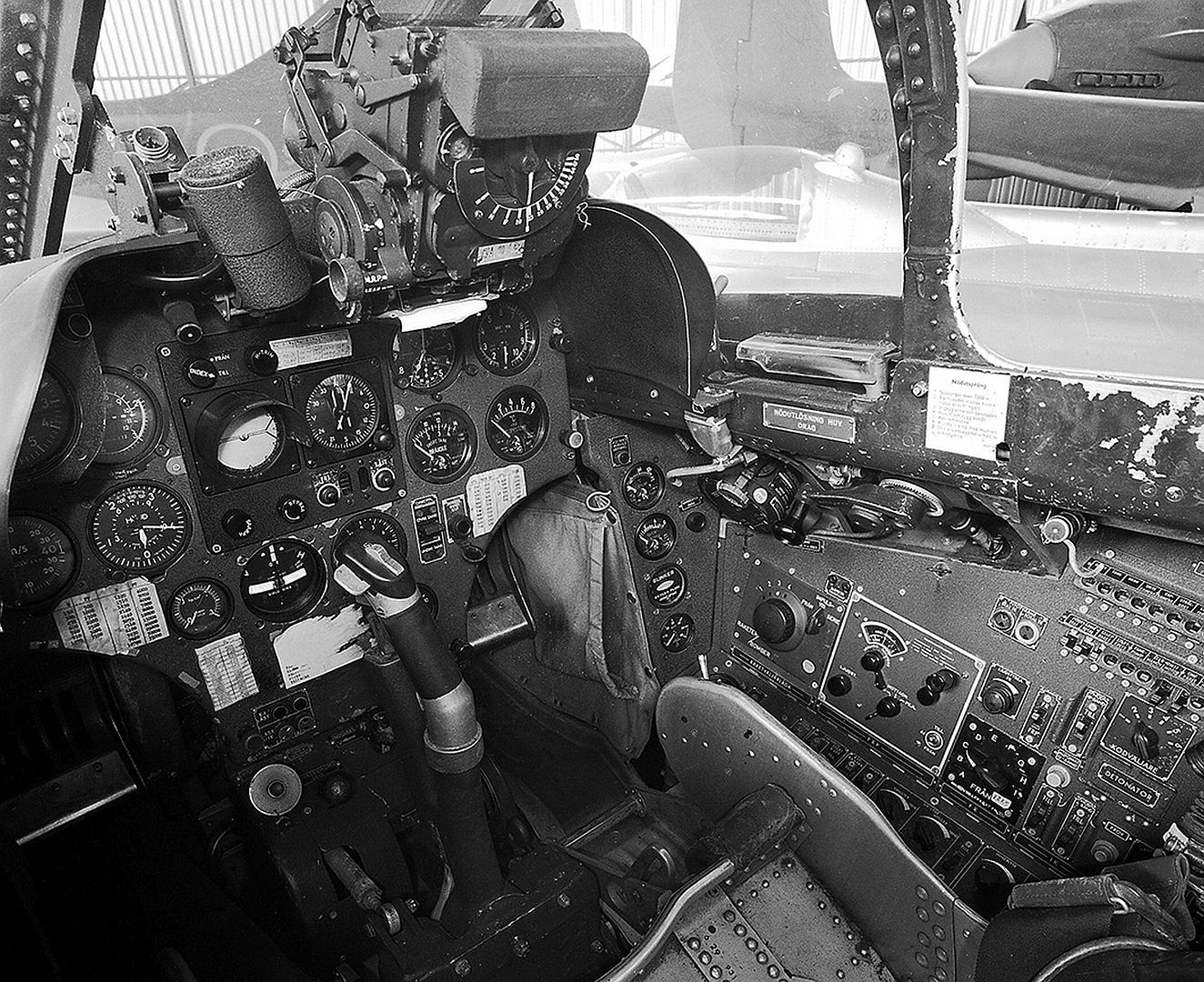
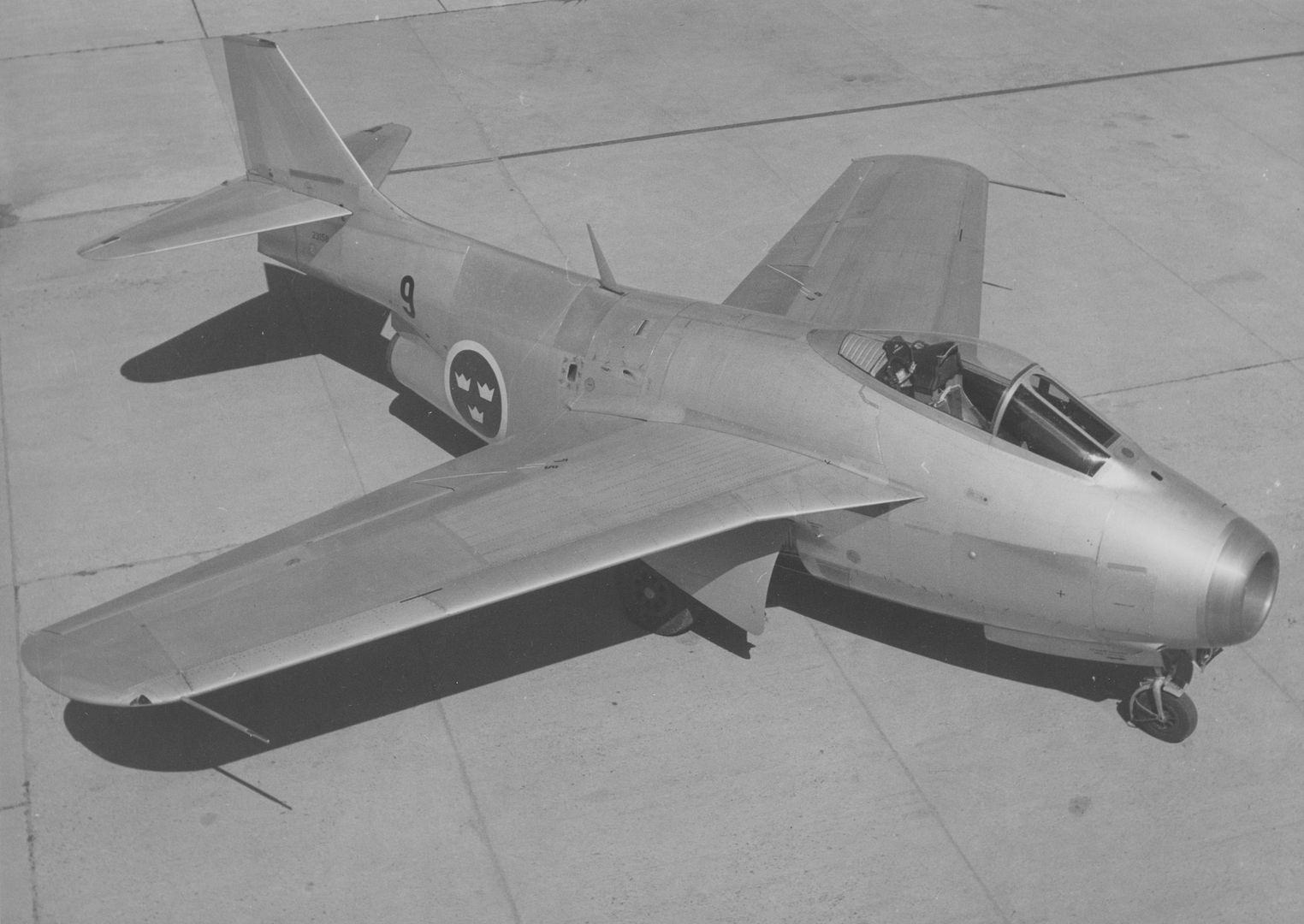
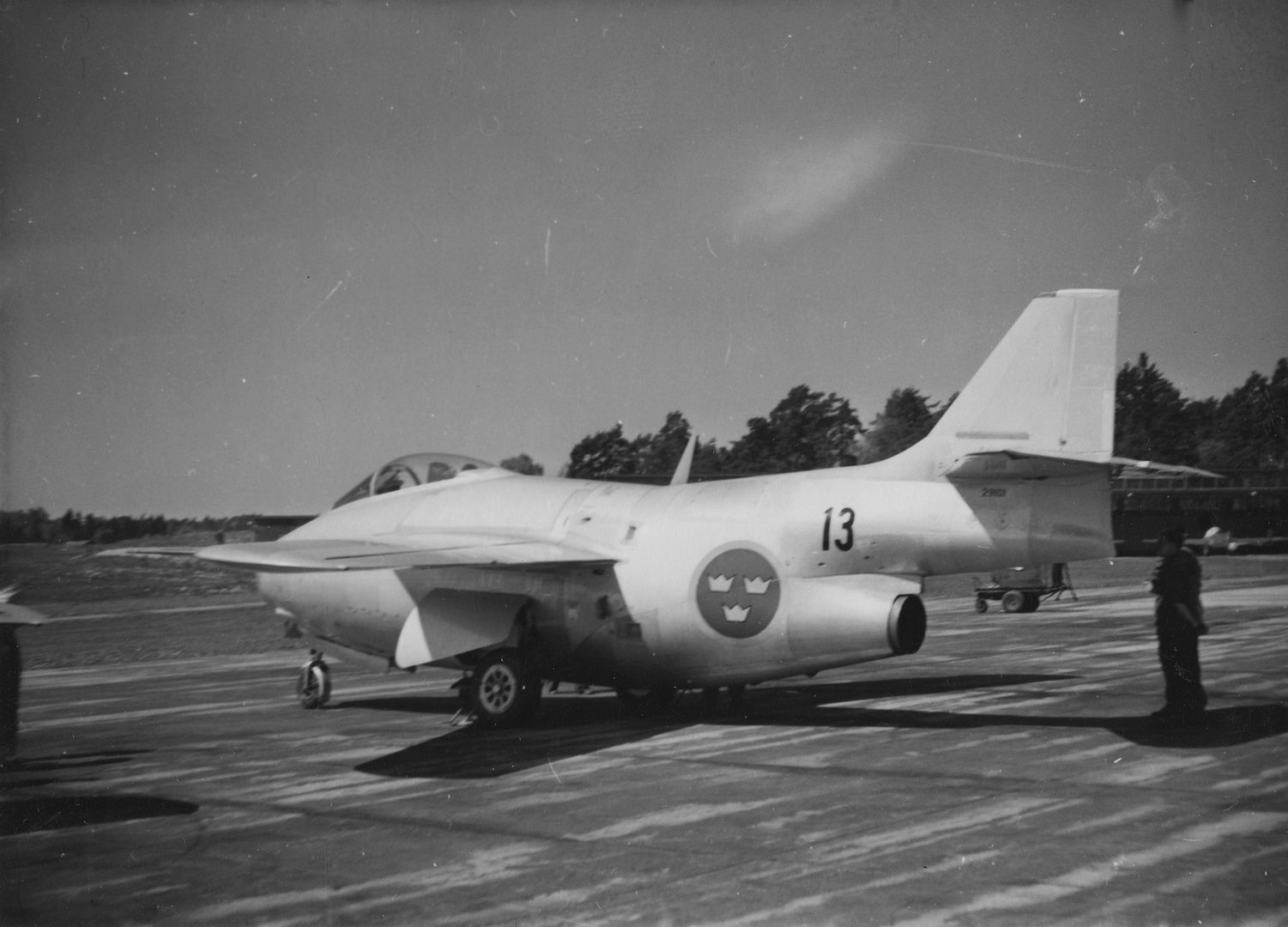
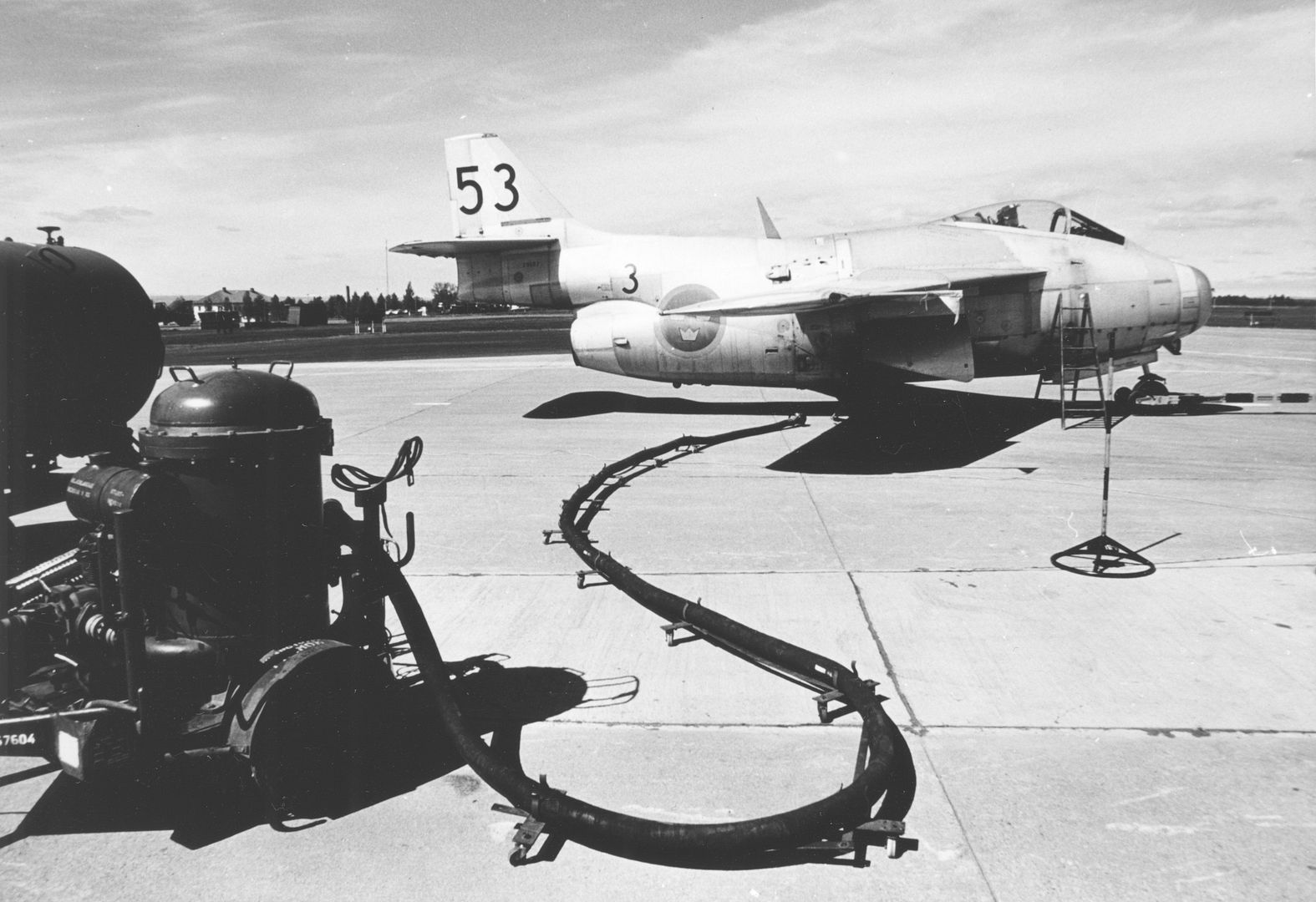

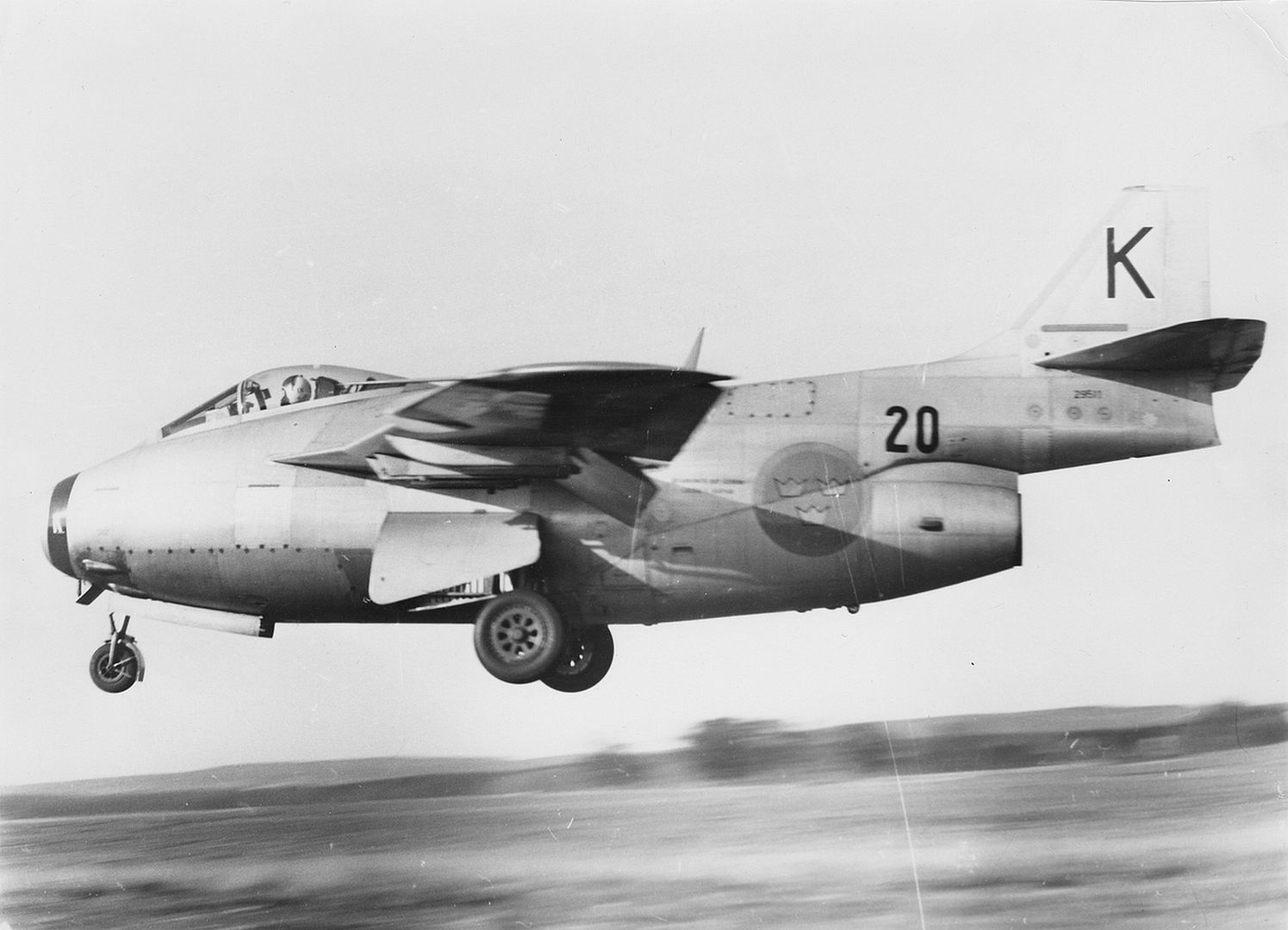

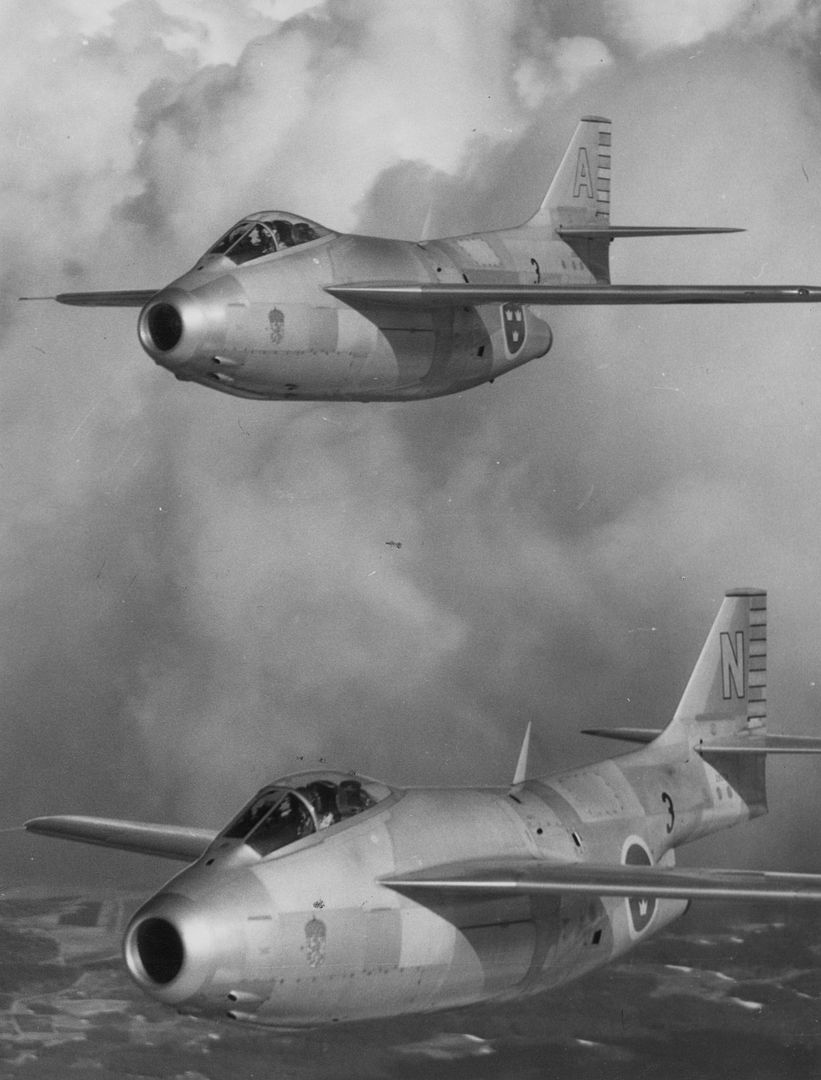
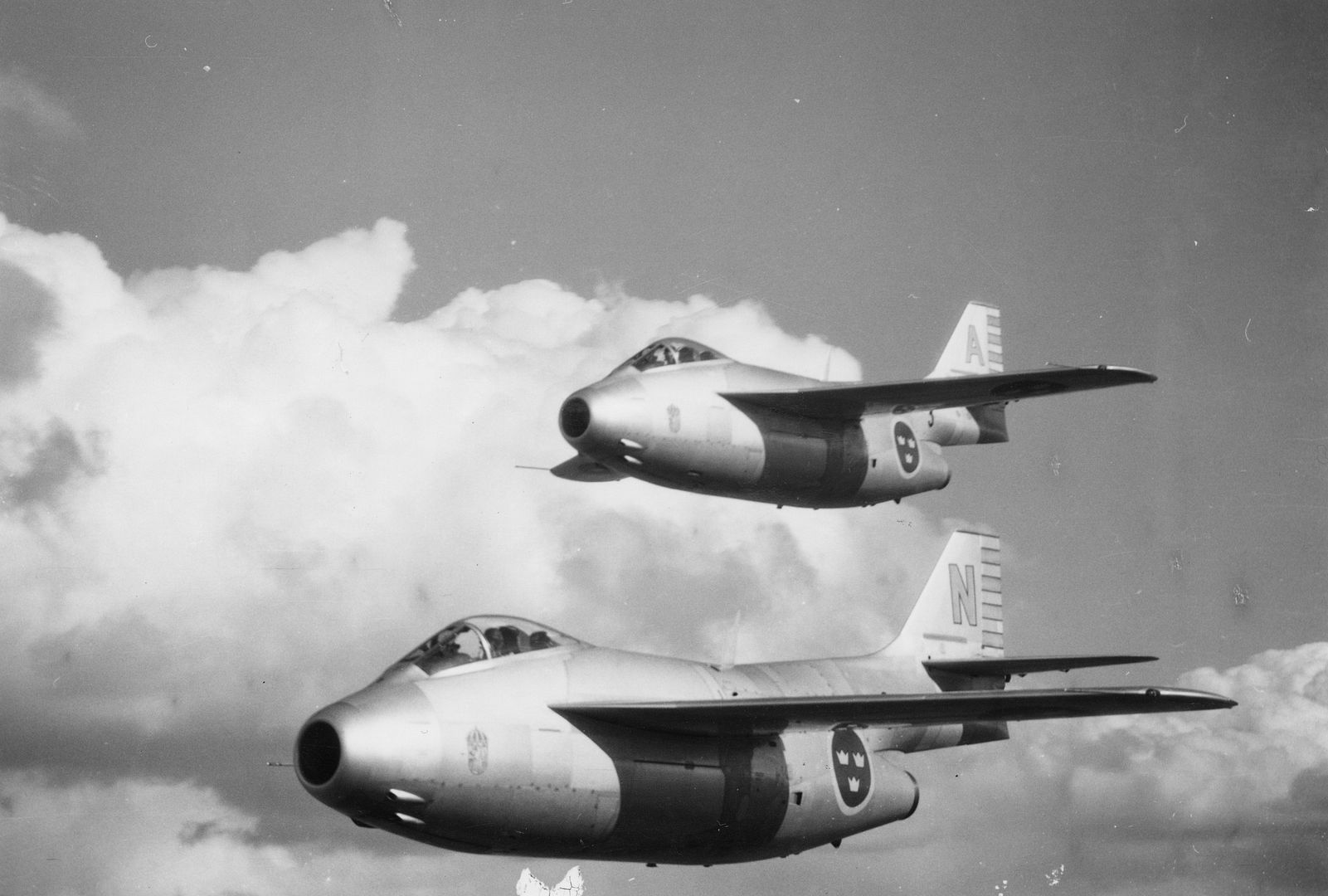
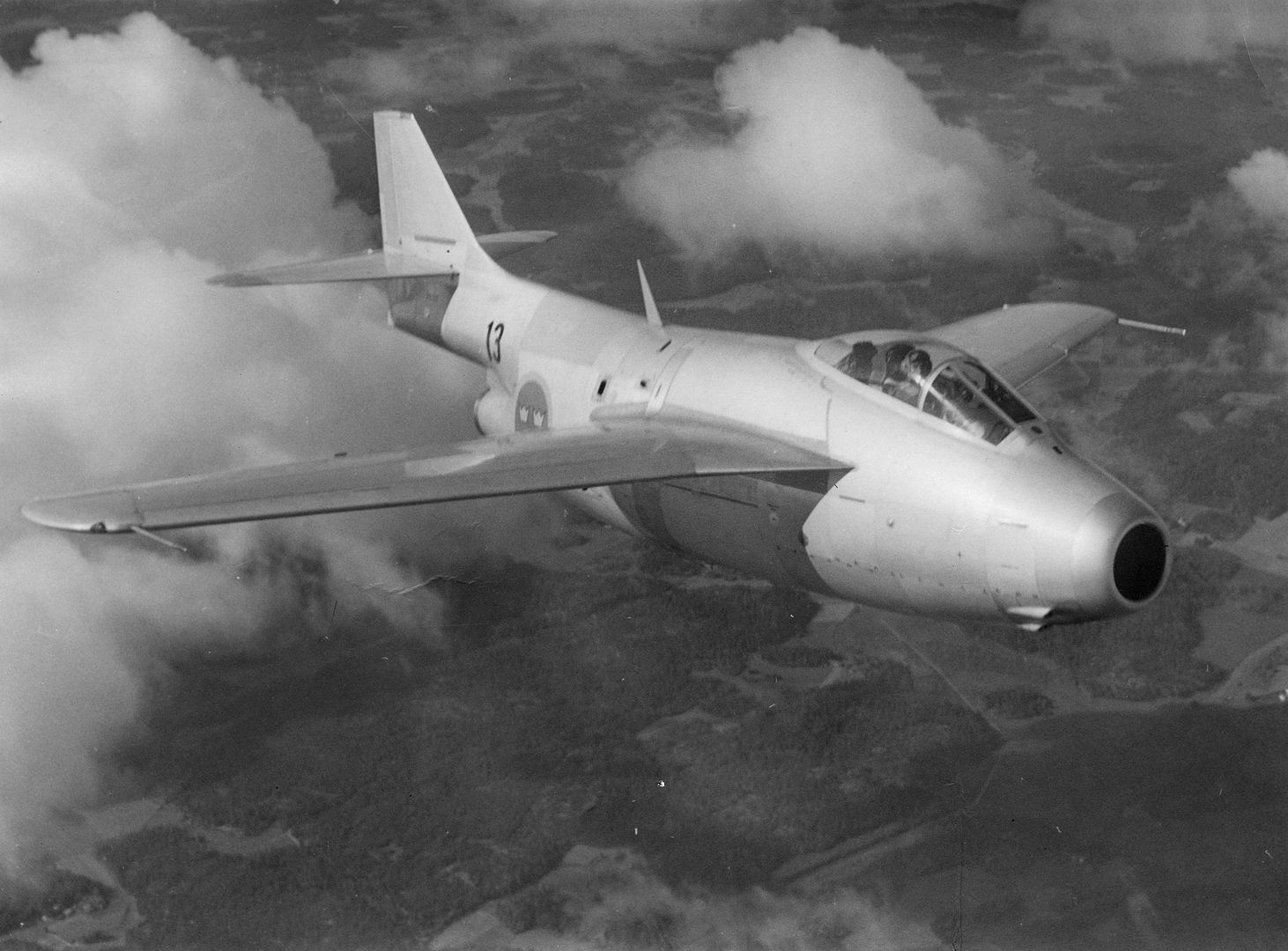

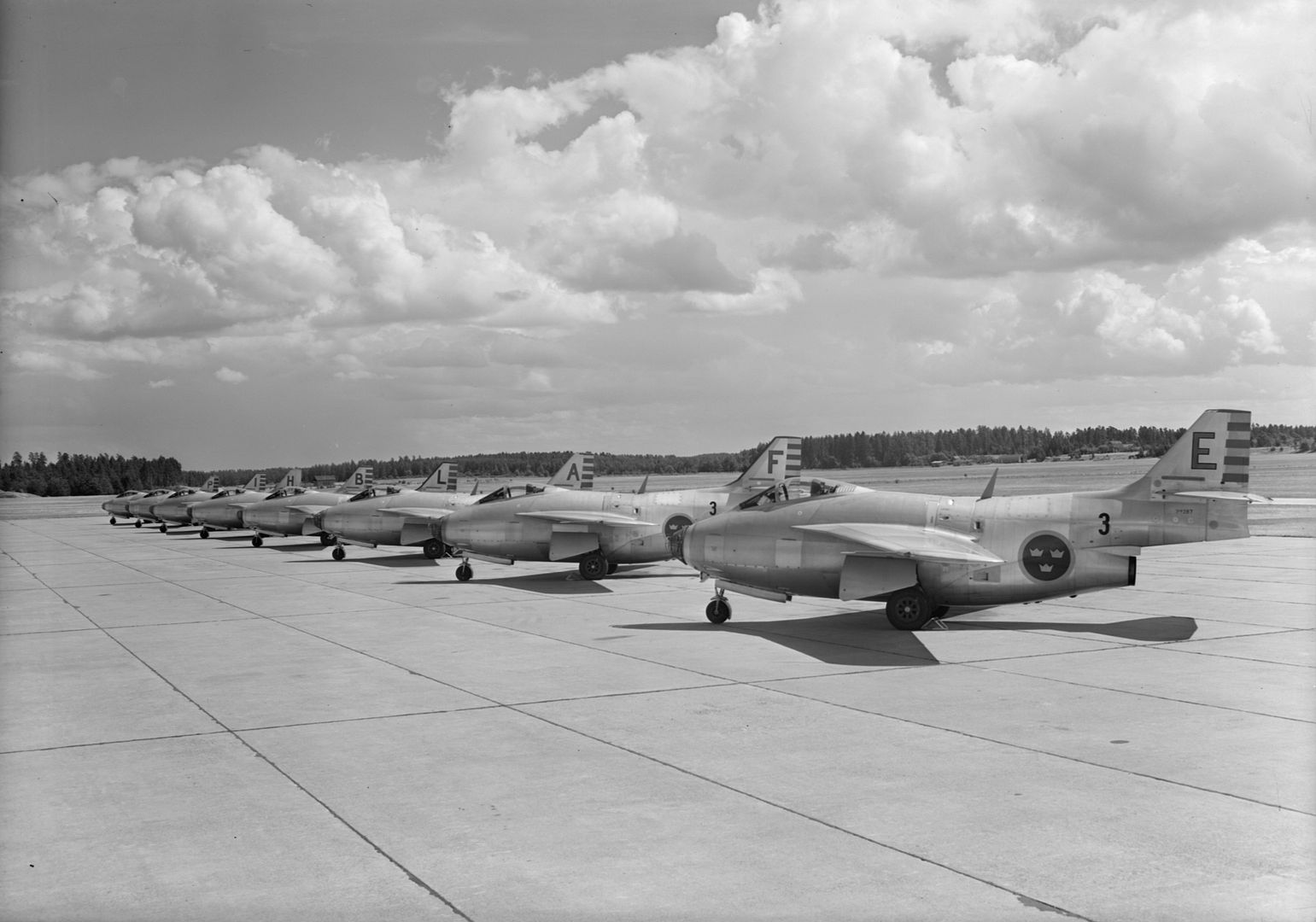
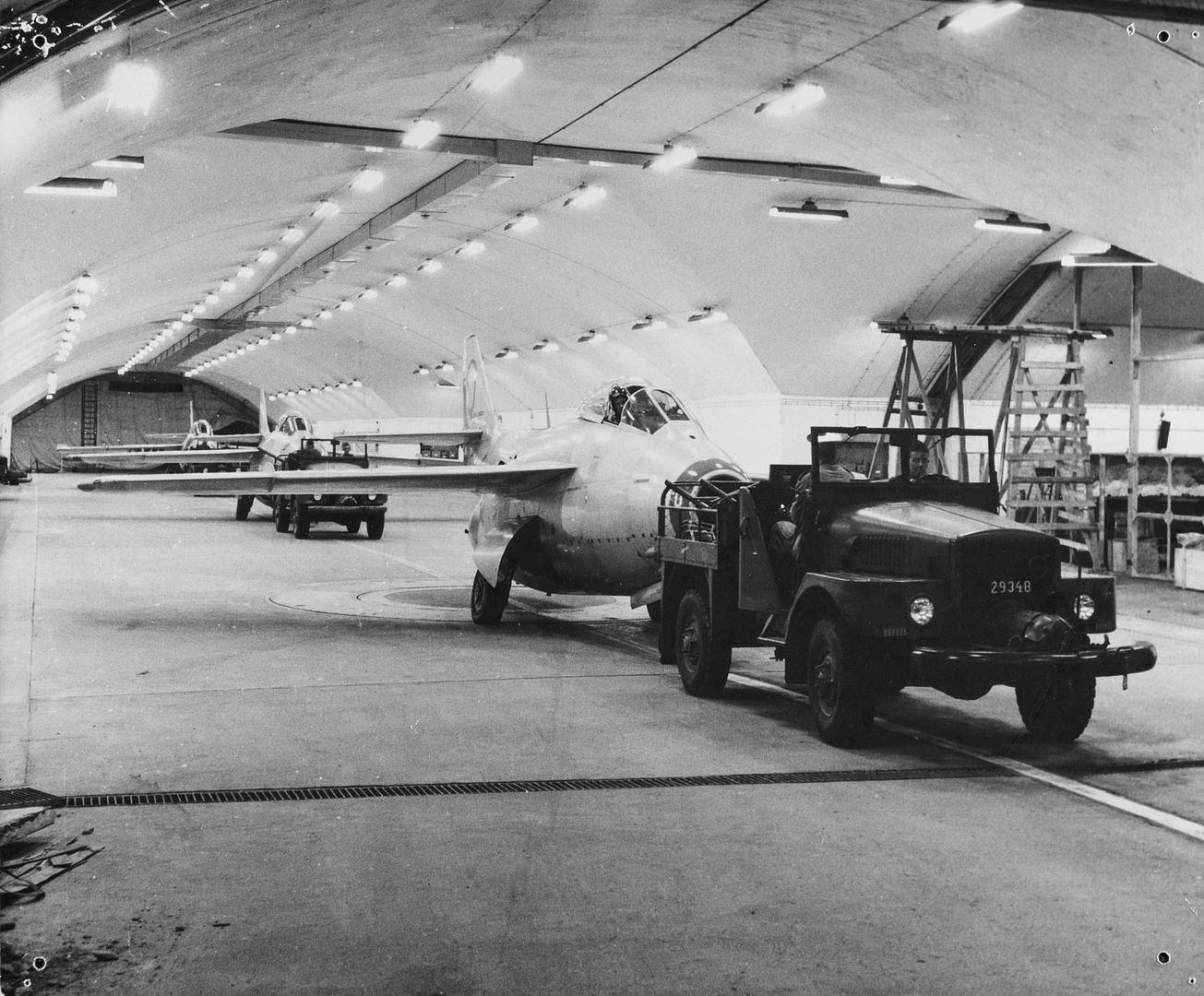

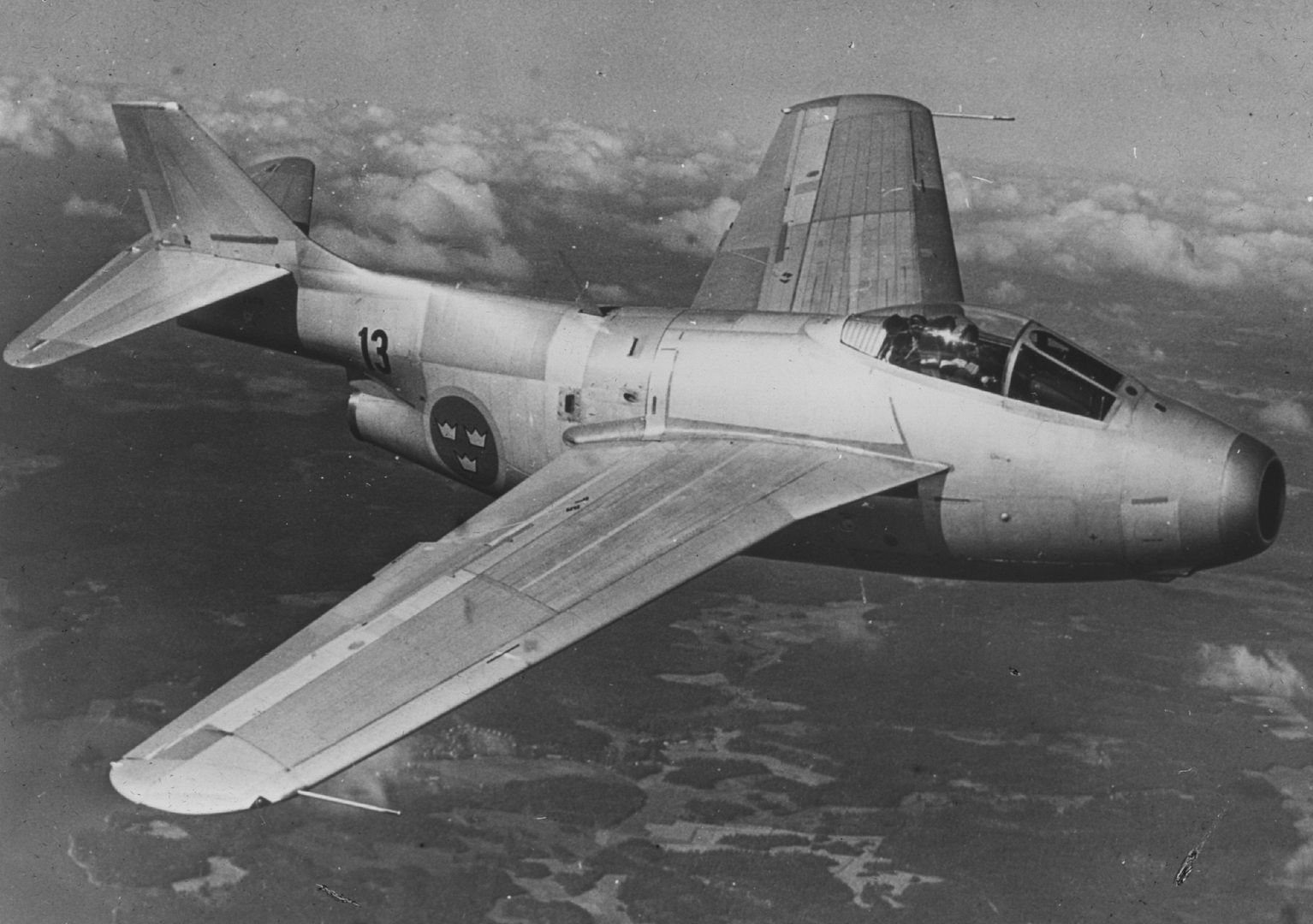
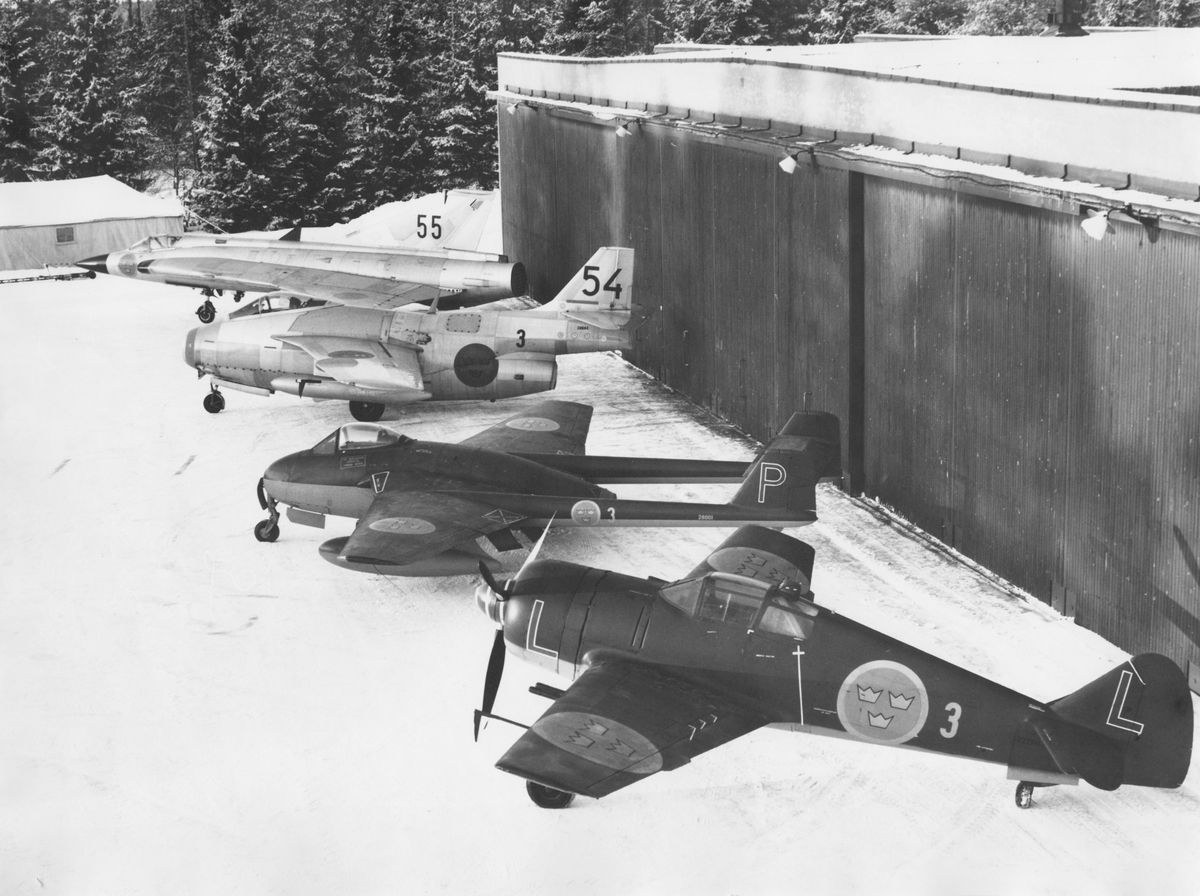
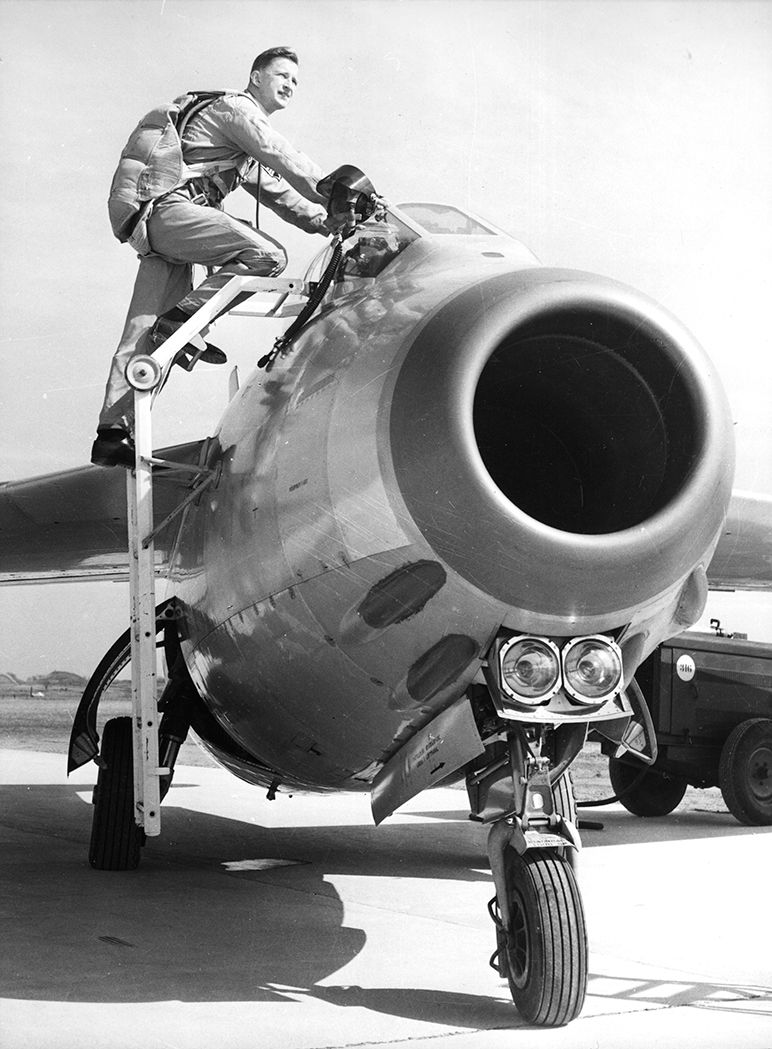
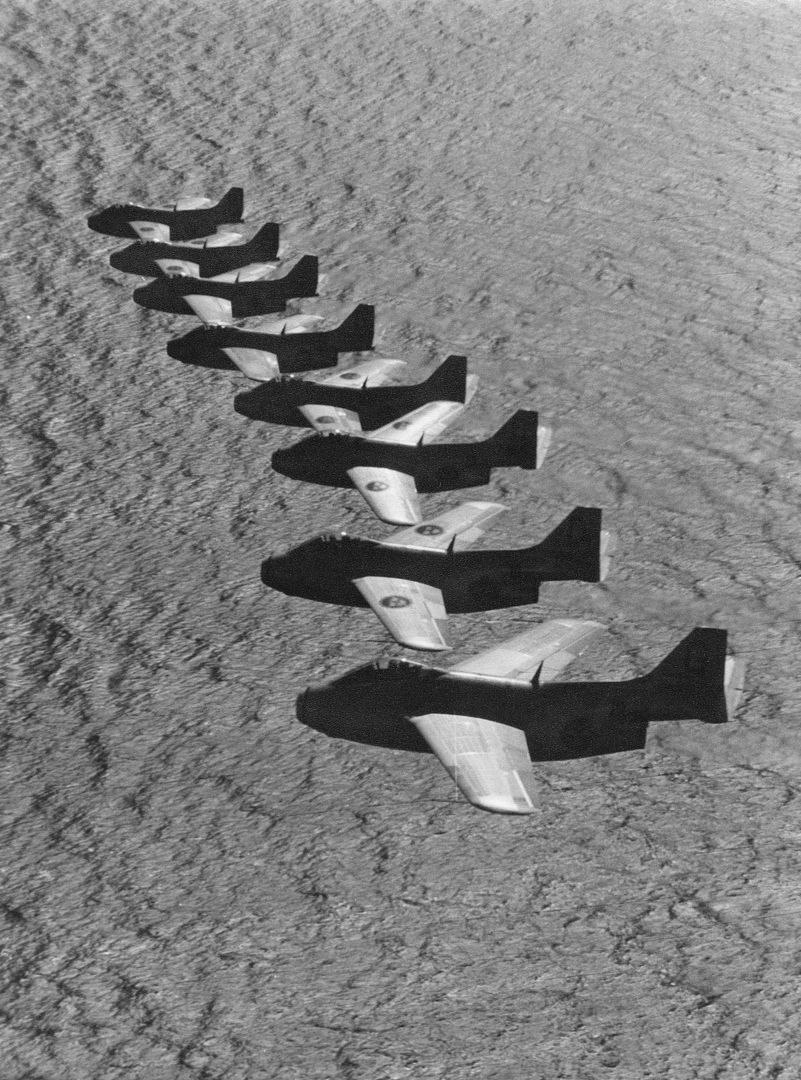
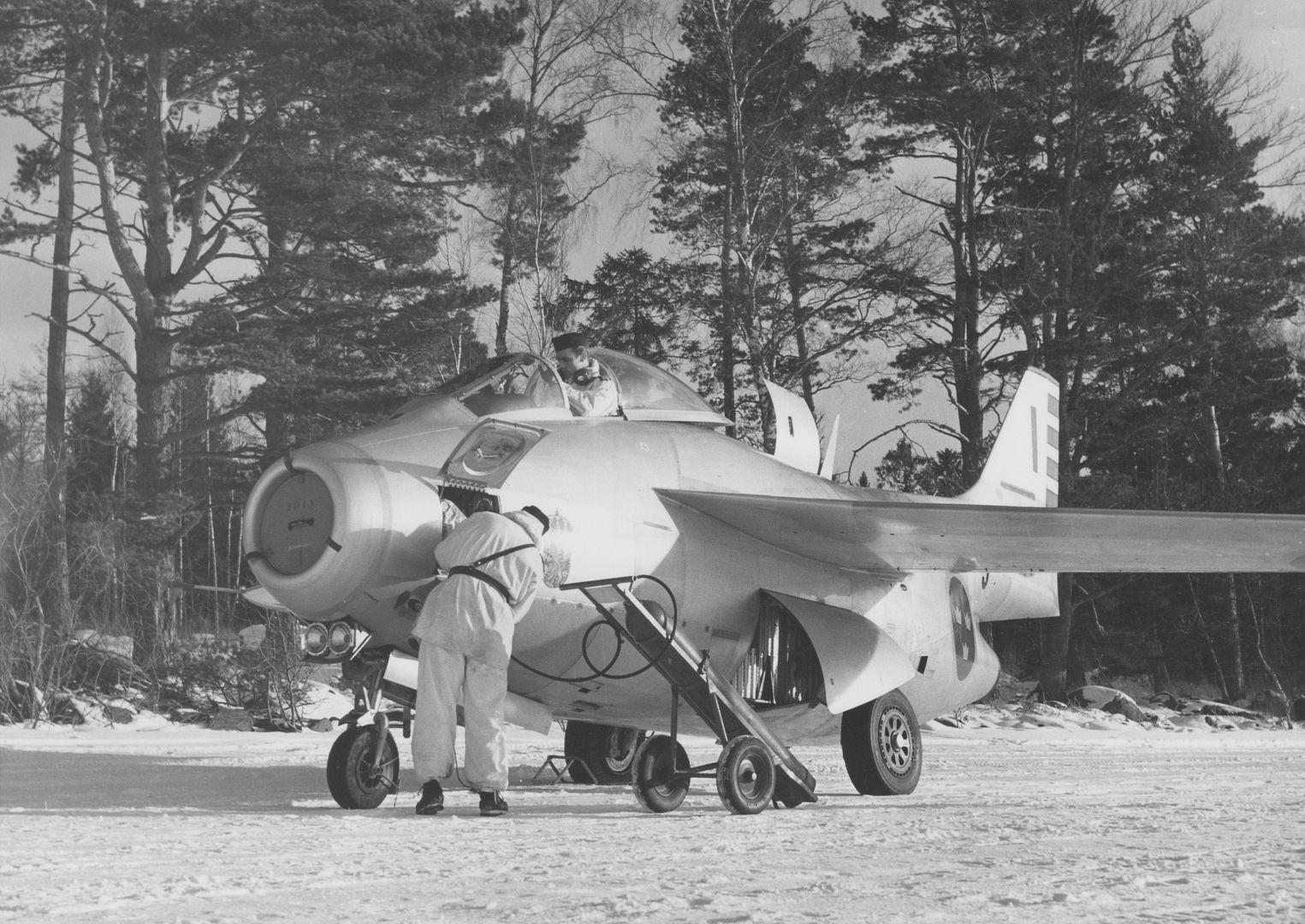
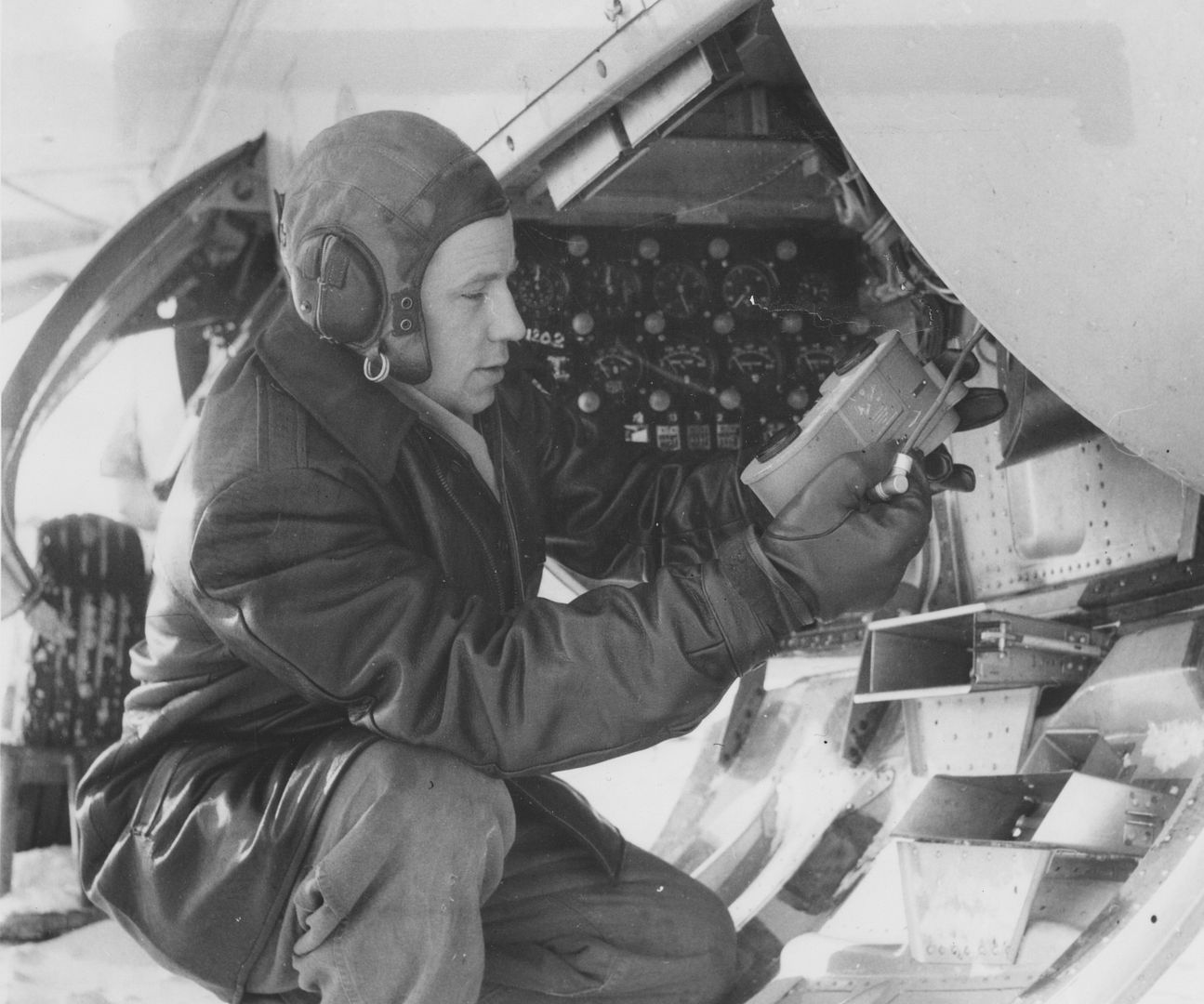
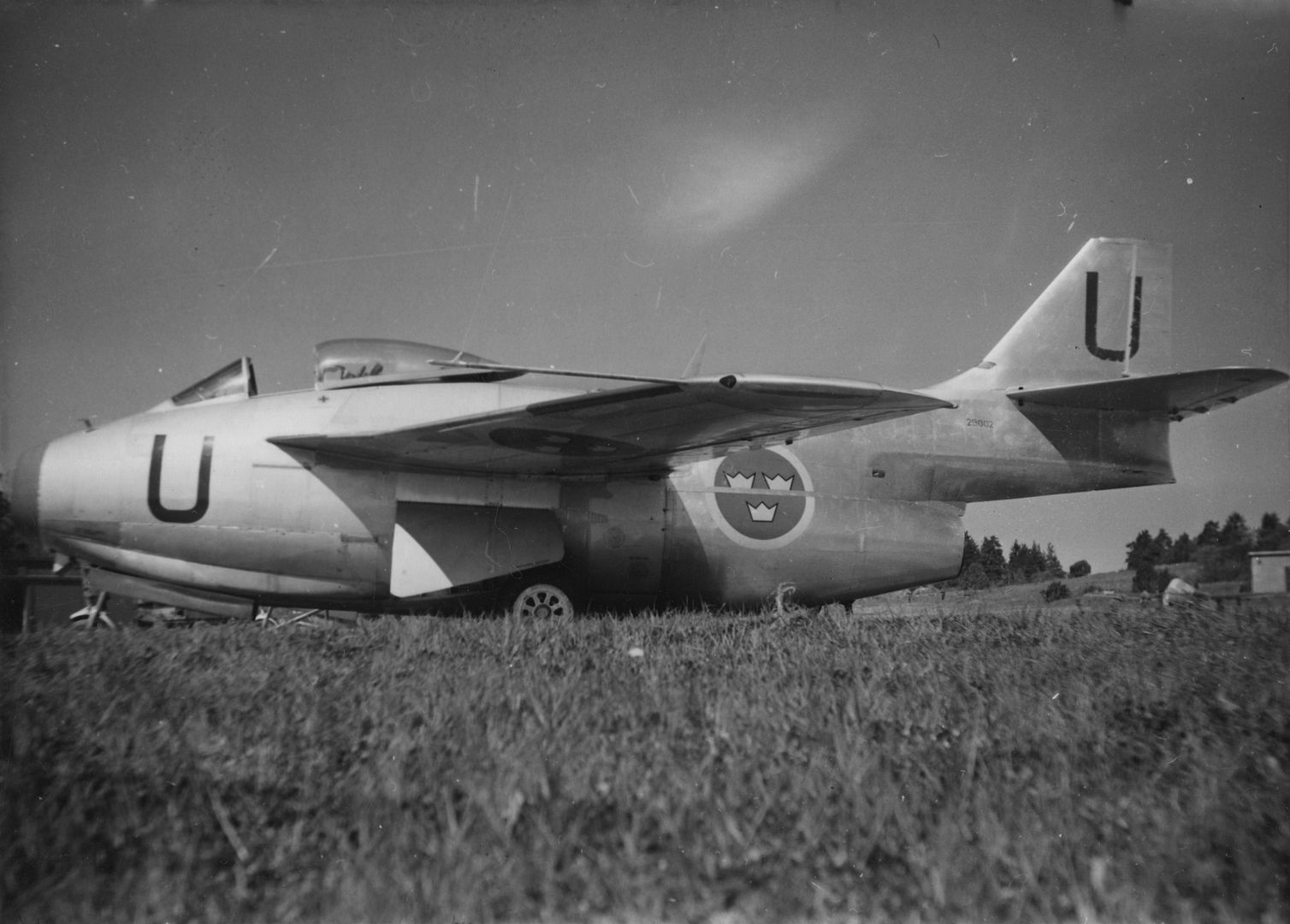
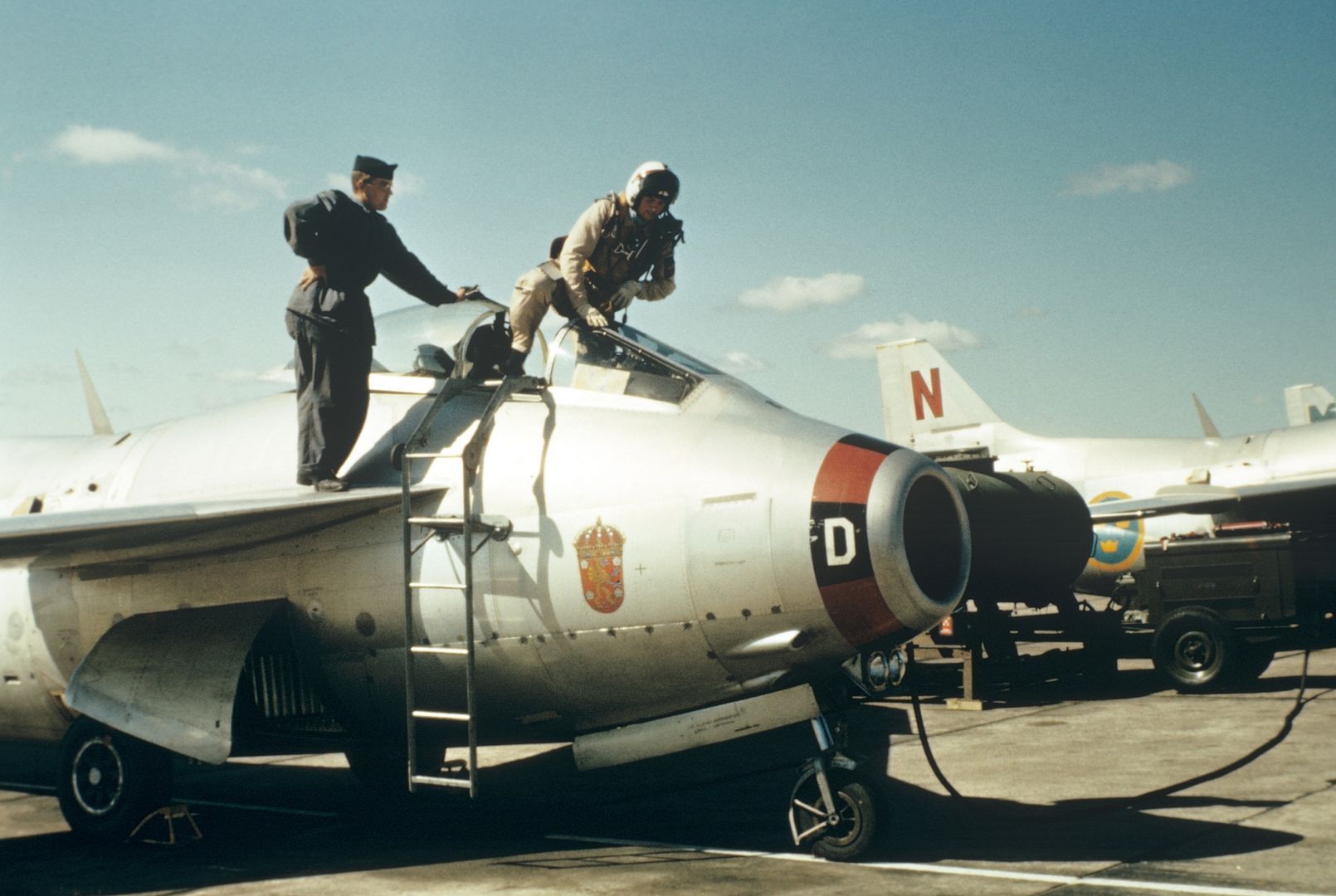
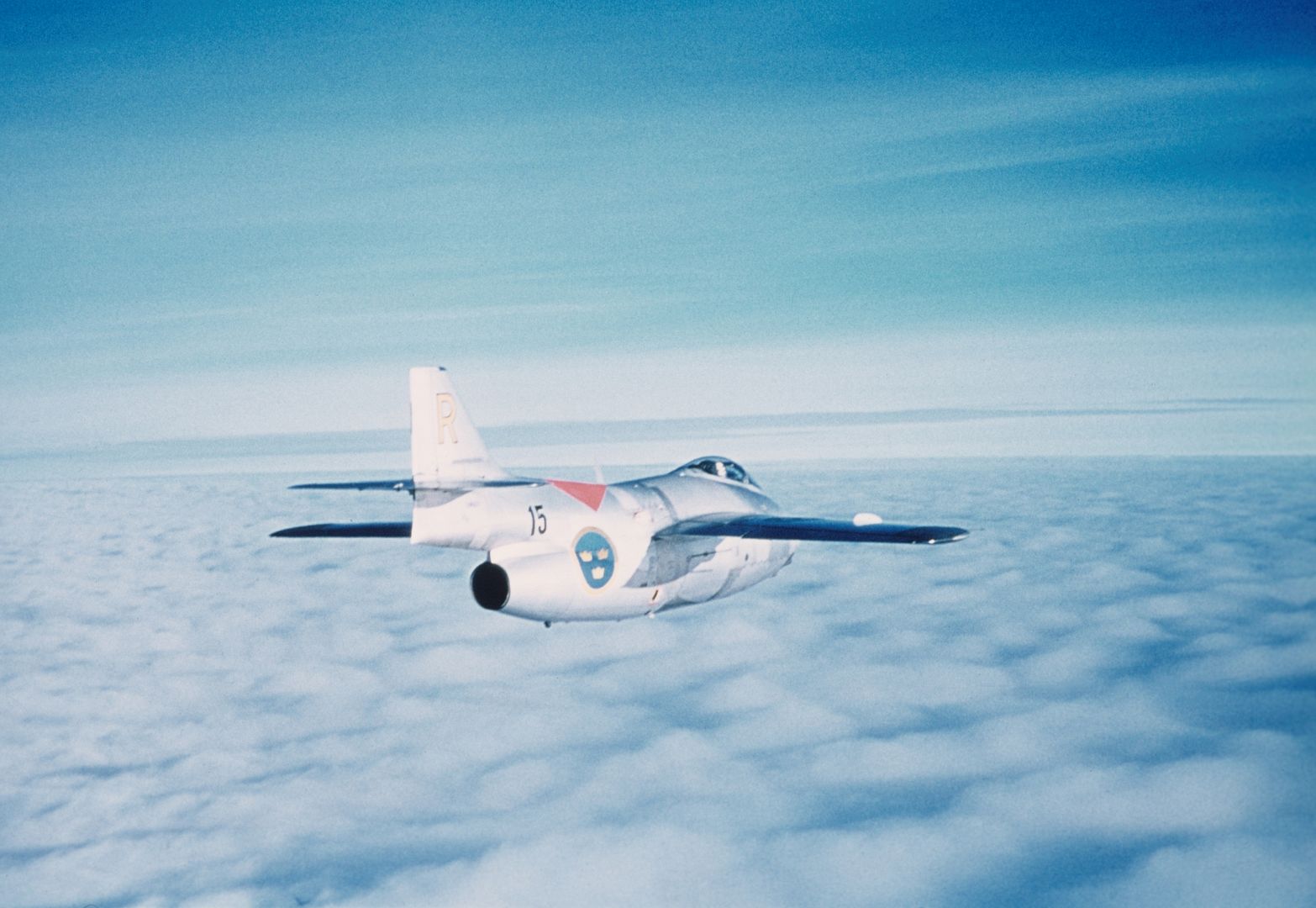
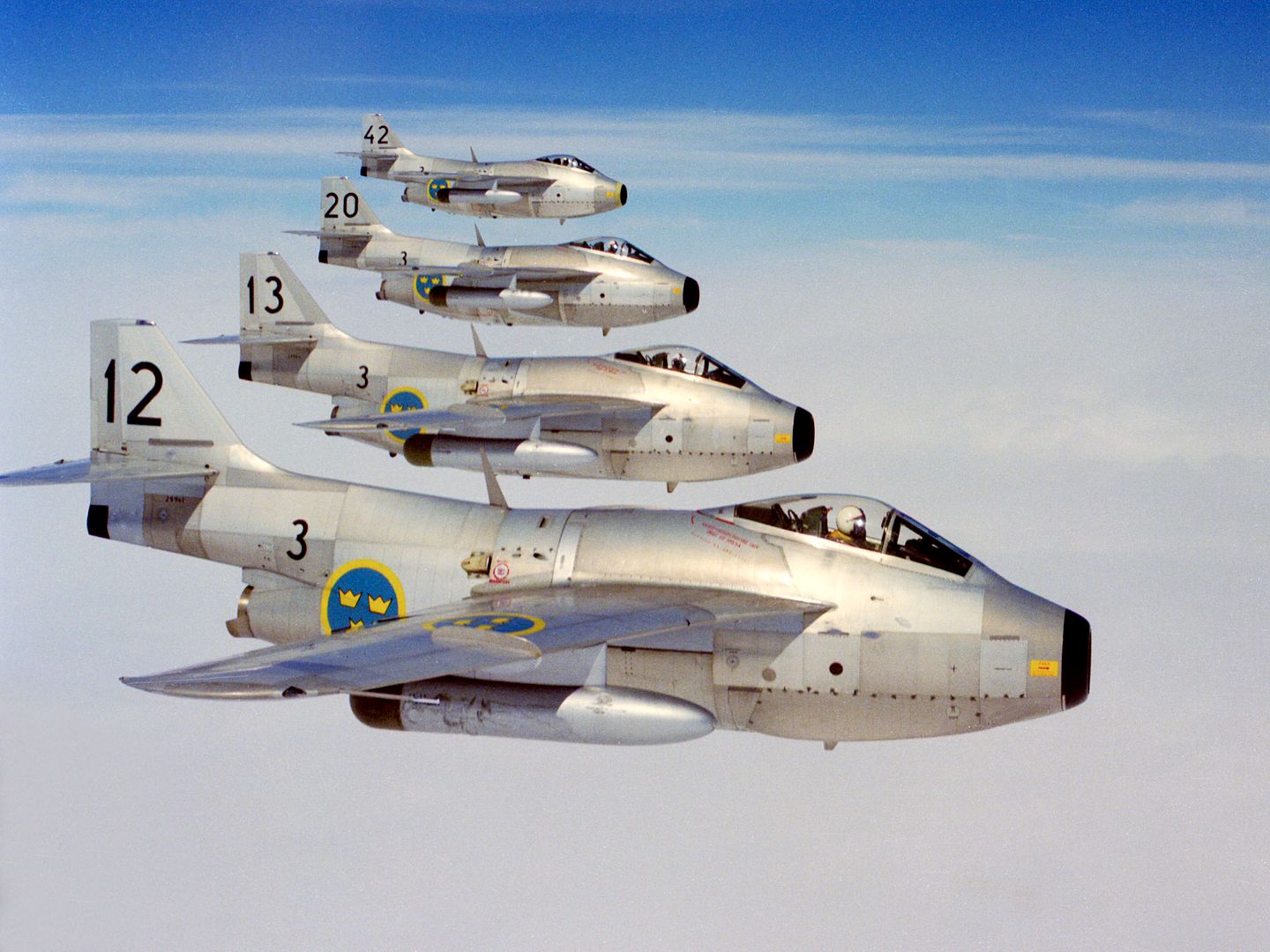






Below Austrian
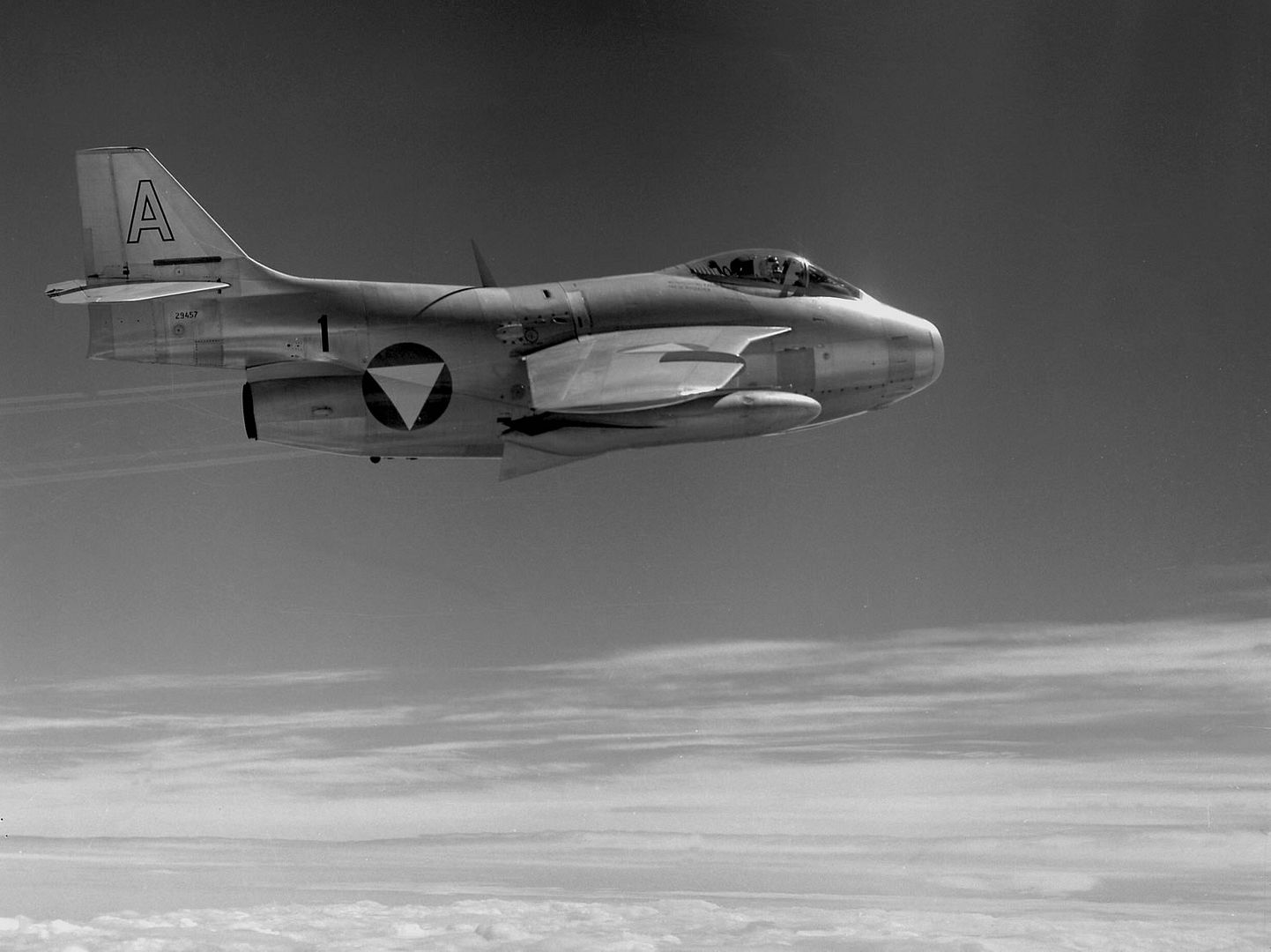
Below UN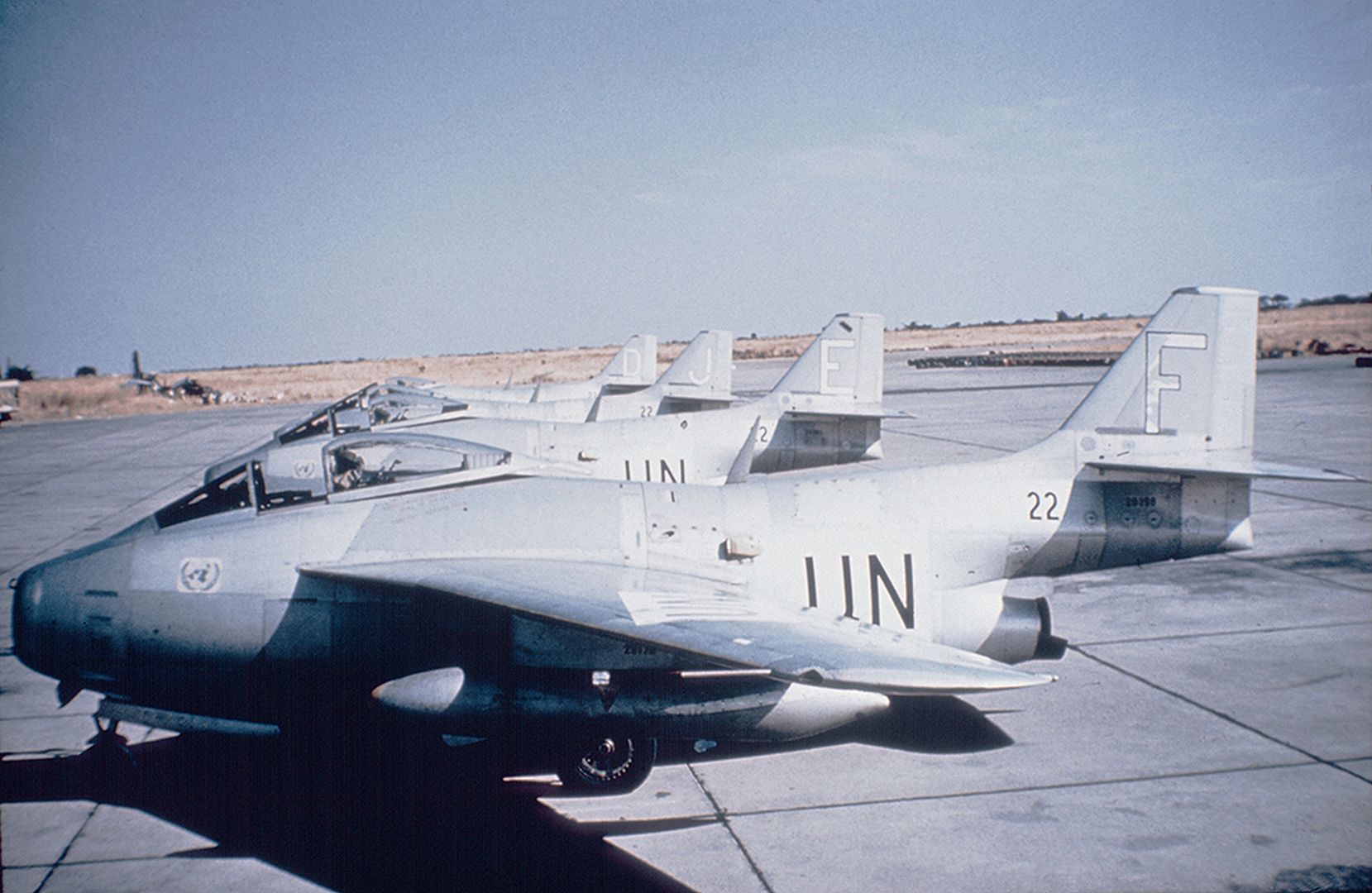



Post a reply
- Go to Previous topic
- Go to Next topic
- Go to Welcome
- Go to Introduce Yourself
- Go to General Discussion
- Go to Screenshots, Images and Videos
- Go to Off topic
- Go to Works in Progress
- Go to Skinning Tips / Tutorials
- Go to Skin Requests
- Go to IJAAF Library
- Go to Luftwaffe Library
- Go to RAF Library
- Go to USAAF / USN Library
- Go to Misc Library
- Go to The Ops Room
- Go to Made in Germany
- Go to Campaigns and Missions
- Go to Works in Progress
- Go to Juri's Air-Raid Shelter
- Go to Campaigns and Missions
- Go to Works in Progress
- Go to Skinpacks
- Go to External Projects Discussion
- Go to Books & Resources
